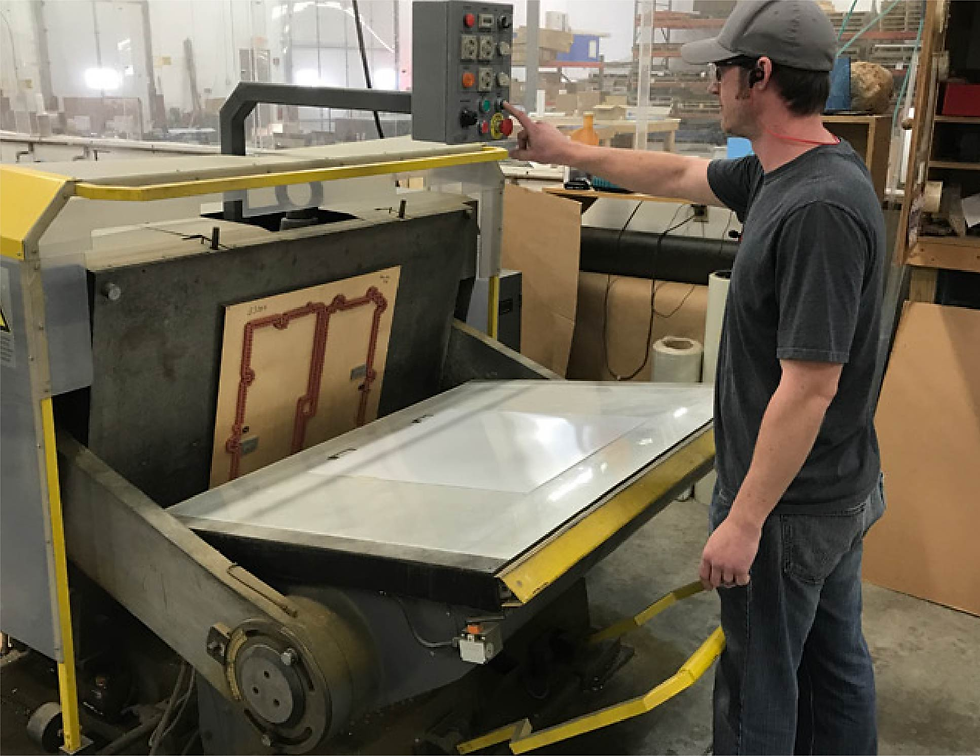A Complete Guide to Die-Cutting
- Lion Paper Team

- Jul 9
- 3 min read
Quick Content Reach:
Brief Introduction
Die-cutting is an essential process widely utilized in the stationery industry to create precise, clean, and unique shapes. From custom notebooks to sophisticated invitations, die-cutting enhances product aesthetics and functionality. In this comprehensive guide, we'll explore everything stationery buyers and product managers need to know about die-cutting.
What is Die-Cutting?
Die-Cutting is a manufacturing process used to cut paper, cardboard, plastic, and other materials into specific shapes using specialized machines and sharp blades known as dies. It allows for consistent precision, enabling complex designs and custom shapes critical for high-quality stationery.

What Are Dies?
Dies are custom-made tools, typically crafted from sharp steel blades shaped precisely according to design requirements. They are embedded into a wooden base or metal backing and operate under pressure to accurately cut or emboss stationery materials, ensuring uniform results for bulk production.

Types of Die-Cutting Machines
Die-cutting machines come in various forms, including:
Manual Die-Cutting Machines: Ideal for small-scale production and customized jobs.
Automatic Die-Cutting Machines: Suitable for large-scale commercial applications, providing high efficiency and precision.
Digital Die-Cutting Machines: Perfect for short-run productions and prototypes with digital accuracy.

Types of Die-Cutting Methods
Understanding different die-cutting methods helps you choose the right technique for your stationery project:
Flatbed Die-Cutting: Uses flat dies to cut sheets individually, ideal for thicker materials.
Rotary Die-Cutting: Uses cylindrical dies, suitable for high-speed, large-volume production.
Laser Die-Cutting: Offers precision cutting without physical dies, ideal for intricate and delicate designs.
Die-Cutting Procedure: Step-by-Step Guide
Preparation:
Design is finalized, and a steel die is created according to exact specifications.
Setup:
The die is positioned onto a press, typically replacing a printing plate.
Material to be cut is placed accurately onto the machine’s bed.
Cutting Process:
The press applies pressure, pressing the die into the material, achieving the desired shape.
Ejection and Inspection:
Cut products are ejected from the machine.
Quality inspectors verify alignment and precision, ensuring products meet standards.
Applications of Die-Cutting in Stationery Items
Die-cutting significantly enhances stationery products by enabling unique and functional designs, including:
Custom Notebooks and Journals
Calendars
Greeting Cards
Stickers and Labels
Gift Bags and Packaging
Bookmarks
Envelopes and Invitations
Paper Crafts and Scrapbooking

Die Cutting Tips
Avoid Sharp Corners: Rounded corners reduce material tearing and improve durability.
Maintain Adequate Spacing: Keep sufficient space around holes or intricate details to ensure material integrity.
Design Artwork Bleed: Artwork should extend at least 1/16" beyond cut lines to prevent unwanted white edges.
Separate Layers in Design Software: Clearly delineate die lines in your design software to facilitate accuracy in production.
Final Thoughts
Understanding die-cutting is critical for stationery product managers and buyers, enabling informed decision-making and enhancing product appeal. At Lion Paper Products, we leverage advanced die-cutting machinery and processes to deliver customized, high-quality stationery products tailored specifically to your brand.
Contact us at www.lionpaper-istyle.com or via WhatsApp at +86 13750756354 for expert advice or to discuss your custom stationery needs.
FAQs:
Q1: What materials can be die-cut?
A: Paper, cardboard, plastic, vinyl, and fabric are commonly die-cut.
Q2: Can die-cutting achieve intricate designs?
A: Yes, especially laser die-cutting, known for precision and detail.
Q3: What is the difference between rotary and flatbed die-cutting?
A: Rotary is faster for high-volume, while flatbed handles thicker materials more effectively
Q4: Can die-cutting be combined with printing?
A: Absolutely, combining die-cutting with printing is common for customized products.
Q5: How do I choose the right die-cutting method?
A: Consider volume, material thickness, design complexity, and budget.
Q6: What is a typical error in die-cutting, and how to avoid it?
A: Misalignment is common; ensure precise machine calibration and consistent quality checks.
Are you looking for a reliable manufacturer? Reach out to Lion Paper for a free quote and consultation. Let’s collaborate on creating custom writing paper products that will set your brand apart from the competition.





Comments